Creation of combat space: 21 century military engineering vehicles
German car Wisent 2 support tanks FFG Leopard can be converted from an original ARV to a more specialized CEV combat engineering machine in less than 24 hours
Over the past decade, heavy armored engineering vehicles have proven their value on an asymmetrical battlefield and a new generation of specialized vehicles is currently being adopted
Until recently, combat engineering vehicles CEV (combat engineers vehicles), or as they are also called armored engineering vehicles AEV (armored engineer vehicles), were mainly based on the chassis of the main battle tanks (MBT).
Obviously, from a financial point of view, it makes sense to benefit from obsolete platforms, reworking them for much less vulnerable engineering tasks, focusing on their body, power plant and chassis. However, such outdated machines often do not have sufficient mobility to work with more modern maneuverable units and today there is a tendency to develop CEV with the same level of mobility and protection as modern MBTs in order to guarantee the possibility of working together side by side in the advanced area.
Some of them are new, specialized vehicles, for example, a Trojan defensive vehicle from BAE Systems Global Combat Systems, a member of the engineering tank family that is in service with British engineering troops. Trojan machines use chassis of the Challenger 2 MBT components and have similar mobility and uniformity, but mostly are highly specialized machines.
However, most of the latest CEV projects are more likely to be based not on the obsolete, but on the excess OBT, which were converted to new tasks. This is, of course, a more cost-effective solution compared to the creation of completely new CEVs, because it will take years to develop and arm them.
Examples of reworked CEVs include Wisent 2 from Flensburger Fahrzeugbau (FFG's), Heavy Mine Breaching Vehicle (HMBV) heavy mine lashing machine from Patria Land Systems and Kodiak from Rheinmetall Landsysteme-RUAG Defense, all based on surplus Leopard X X But on the other side of the Atlantic, the Assault Breacher Vehicle (ABV) assault vehicle of the Marine Corps, based on the M2A1 chassis (another designation Shredder), successfully proved itself; The American Army has now joined this program. The infantrymen ordered 1 systems, and the army later ordered 45 systems.
All these machines were reworked and supplemented with devices for clearing obstacles, preparing firing positions and performing various tasks that limit mobility. Therefore, as a rule, they are equipped with a front dozer blade, hydraulically operated winch and universal crane installation. Some vehicles, such as Trojan and ABV, deployed in Afghanistan may also be equipped with mine plows or rollers, often used in conjunction with a reactive demining system. For very dangerous operations, some CEVs are equipped with a remote control so as not to endanger the crew of the vehicle.
However, most of these newer CEVs have a higher level of protection against mines and RPGs than their predecessors, and some also have explosion-proof seats. Despite this, in all projects the lethality was sacrificed for “utility,” the towers replaced the combat modules or turret installations with an 7,62-mm or 12,7-mm machine gun or a grenade launcher. Passive night vision equipment is now standardly installed on most CEVs, as well as WMD and air-conditioning systems combined into one unit, which makes it possible to deploy machines around the world. As might be expected, the equipment and tasks are slightly different for each country.
Patria Land Systems' HMBV is equipped with a Pearson Engineering FWMP front plow; in the photo he is in a raised position
Leopard based machines
MBT Leopard 2 has established itself as one of the most popular and widely used tanks in recent years, not least thanks to the surplus in European warehouses that gradually "flowed" in the army of many countries. However, a large number is still available, and at present these machines are being upgraded to various engineering and other support vehicles.
One of the most notable engineering companies is the Wisent 2 support machine, shown by the German company FFG in 2010. One of the noteworthy features of the design is that the car can be remade from the lining configuration in the BREM and back in 24 hours.
The Wisent 2 machine was obtained by disassembling a Leopard 2 hull part and installing a new, all-welded armored steel superstructure in front of it with space to accommodate a crew of two or three people.
In the CEV configuration, a dozer blade with a hydraulic actuator 3,54 meter width or 4,04 meter is installed in the front, two winches and a crane unit with a lifting capacity of 32 tons are also installed. The machine is equipped with additional anti-mine and ballistic protection, an auxiliary power unit is installed. When carrying out repairs in the field (for example, replacing the engine), the Leopard 2 MBT powerplant can be placed on the aft platform.
When converted into an AEV configuration, the crane is replaced with a hydraulic scissor boom with a bucket, which can be replaced with an auger bit or concrete cutting equipment. Instead of a dozer blade, equipment optimized for engineering tasks can be installed: Full Width Mineplough (FWMP) full-width plows or Pearson's Track Width Mine Plow (TWMP) and aisle marking system. Alternatively, a roller mine sweep can be installed on the machine.
Of course, Wisent does not yet have a good position in the CEV car market based on the Leopard 2 MBT. The Kodiak joint venture of Rheinmetall Landsysteme and RUAG Defense received orders from the Netherlands (10), Sweden (6) and Switzerland's first customer (12).
Kodiak differs from the Wisent in that it retains the former location of the driver as in the MBT and installed a new two-piece all-welded armored superstructure in front of the chassis for the other two crew members.
The crew compartment of the Kodiak is divided by a swiveling hydraulic crane unit with an articulated boom usually equipped with a bucket, which can be replaced with a gripper or hydraulic hammer. Like most of its competitors, the Kodiak has a hydraulic coulter-dozer that can be quickly replaced by a picker to open the road surface or a universal combination of FWMP and the Pearson labeling system. There are also two Rotzler 9-ton hydraulic winches installed on the machine.
A reinforced reservation kit can be installed on the machine, typical armament is a remotely controlled combat module with an 12,7-mm machine gun M2 HB plus groups of 76-mm grenades.
The Finnish army is the main operator of the tank Leopard 2; its fleet is 124 MBT Leopard 2A4 from the surplus of the German army, and currently there are two specialized support machines based on the Leopard 2: HMBV and the Armored Vehicle-Launched Bridge.
The HMBV variant was developed by Patria Land Systems, six vehicles were delivered to the Finnish army in 2008 year. The commander and the mechanic are sitting in a new, protected superstructure of the tower installed on the site, there is space for another crew member in the hull, but the driver’s position remains the same, ahead on the left. The situational awareness of the crew under the armor is complemented by a set of front-view cameras and passive night-vision equipment.
The machine has a complete set of mine clearance equipment from Pearson Engineering, including an FWMP or Surface Mine Plow mine plow, mounted in front and controlled by the driver. These plows can be replaced with a Combat Dozer Blade to clear obstacles on the battlefield or to equip firing positions and bridge sites. The marking system of the aisles from Pearson is in the stern of the car, it sets the marking flags for the cars following it.
In order to increase the survivability of the crew during the demolition of the car, an additional bottom was installed and, unusually, all the crew seats are attached mainly to the roof, and not to the bottom.
As tradition “dictates”, the arming of the machine serves for self-defense; The Russian 12,7-mm machine gun is mounted to the right of the add-on, plus a total of 16 launchers of 76-mm grenades with electro-launch.
On the stern platform above the engine, large containers for additional engineering equipment are installed. Patria states that the HMBV machine can be upgraded to install new lashing and self-defense systems, such as a duplicator of magnetic signals, mine rollers and a remotely controlled combat module.
Israel
Israeli combat experience not only taught hard lessons, but also helped to formulate clear requirements for specialized engineering vehicles; Most MBTs should have a dozer blade or mine rollers. These lessons were also taken into account by tank crews who fought in Iraq and Afghanistan and regularly used them as improvised vehicles for clearing obstacles and making breaks.
As a result, the Israeli army’s Merkava MBT can also be used for earthworks and clearing obstacles. However, its specialized engineering park is based on the modified Centurion MBT, in which the tower is replaced with a raised superstructure to increase the internal volume and accommodate eight engineering specialists.
On this machine, called Puma, either a plow or roller demining system can be installed in front of the hull. Some vehicles were equipped with the Rafael Advanced Defense Systems Carpet clearance system, but it is not a standard component. The Carpet launcher is installed in the stern and accommodates 20 missiles carrying an air-fuel mixture.
Puma CEV with a raised roof and a roller mine clearance system in front and the Carpet walk-through aft system
It is worth noting the famous bulldozer D9 produced by the American company Caterpillar. The Israelis finalized it and the new modification received the designation D9R. The D9R industrial tracked tractor (such is its peaceful face) is the most modern armored bulldozer in service with the Israeli army. This 71.5 ton bulldozer is driven by an 474 HP engine. The crew consists of two people - the driver and the commander.
Israeli bulldozer D9
In addition to earthmoving and construction, these bulldozers have also found use in other dirty and very dangerous work - mine clearance of high-explosive mines and IEDs (Improvised explosive device). Bulldozers turned out to be very good in this work - their armor makes them almost invulnerable to explosives (one bulldozer survived after the explosion of a charge with a power of 500 kg of TNT). For more dangerous work, the Israel Defense Forces received remote-controlled bulldozers (D9N), known as the Raam HaShachar. Israeli armored bulldozers proved so effective that the US Marines purchased several sets of armor for their D9 and used them in Iraq.
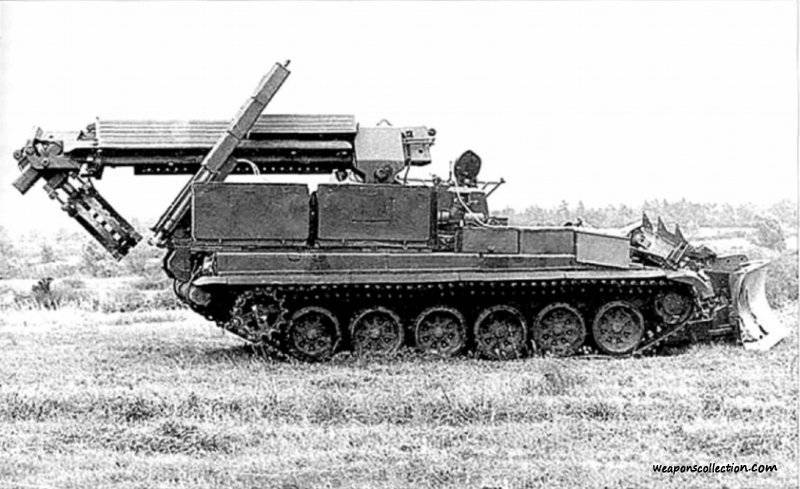
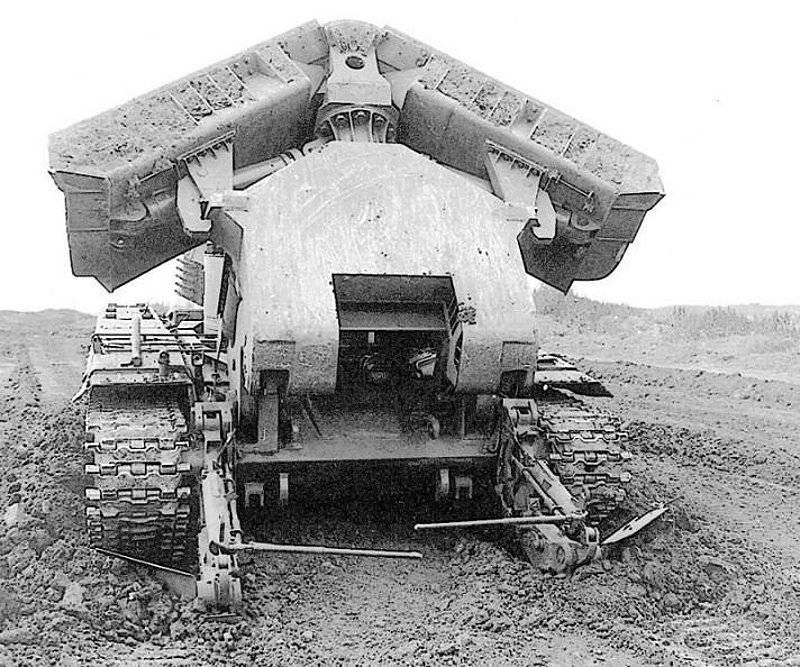
Russian military engineering vehicle IMR-2M with a raised blade, a telescopic boom in the stowed position and a KMT-8 plow clearance system installed in front of the machine
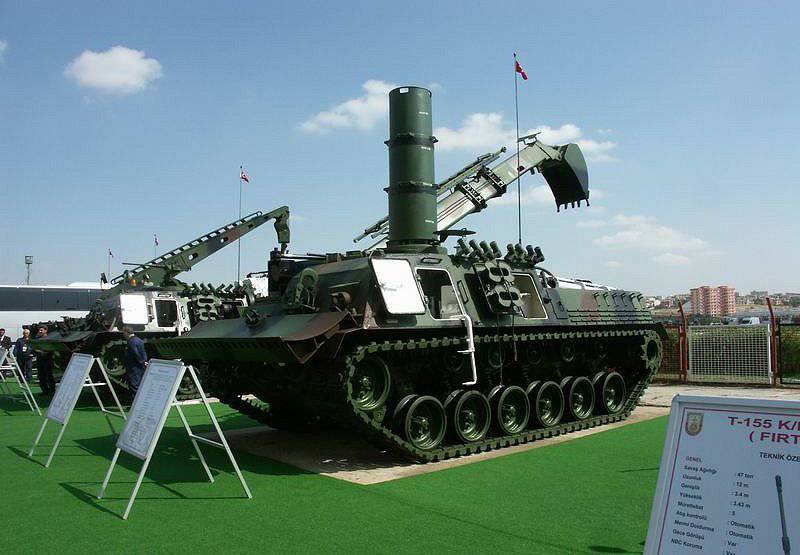
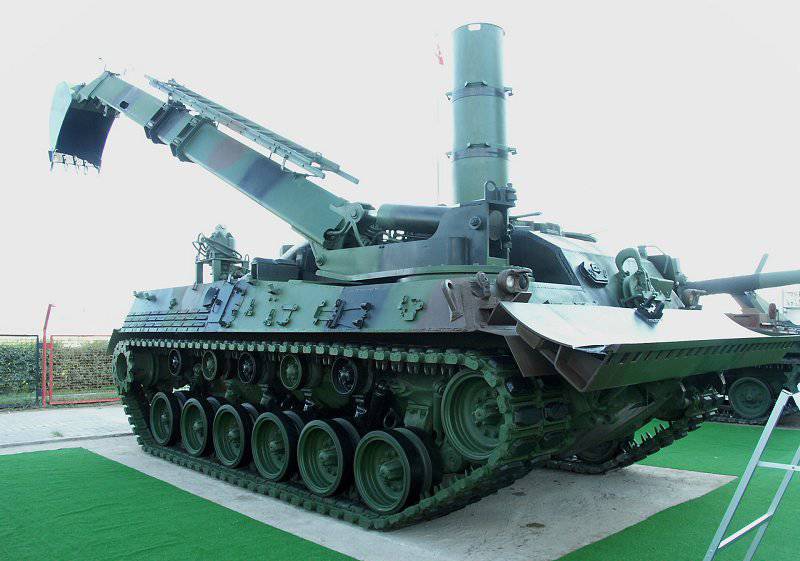
The picture shows the M48 AEV Turkish car with a raised snorkel pipe to overcome water obstacles and a raised crane jib with a bucket on the right side of the chassis
Russia
The Russian army has always placed significant emphasis on all aspects of equipping engineering troops, and therefore the industry has developed several generations of CEV machines (the local name for WRI is an engineering barrier machine) based on modified MBT hulls.
The first WRI was based on the chassis of the T-54 / T-55 tanks, but for the IMR-2 and IMR-3 models the latest T-90 chassis is used. IMR-3М is produced at the enterprise Uralvagonzavod. It is a fairly advanced engineering lamination machine for carrying out work on soils of I — IV categories. WRI sealed, equipped with underwater driving systems (at depths up to 5 meters).
Machines IMR-2 and IMR-3, as a rule, are served by a crew of two people; They can be equipped with a wide range of special equipment, such as a front dozer blade, which, depending on operational requirements, can be used in a straight, V-shaped or angular configuration. The blade can be retracted, it is replaced by a mine plow, working in conjunction with electromagnetic actuators. The machine also has a telescopic boom on which you can install various equipment, such as a bucket or a grab to move trees and other objects.
The Russian industry also developed other specialized engineering vehicles, including a unique amphibious engineering reconnaissance vehicle IRM and machines based on MT-LB. The universal road-digging machine produced by Muromteplovoz is a more specialized machine that has a hydraulic dozer blade in front and a hydraulic boom-excavator installed on the roof.
The basic MBT T-72 and T-90 have front-mounted self-dumping dumps as a standard element, they can also be equipped with various dozer blades and plow systems.
Turkey
Adoption of the tank M60 by Turkey and more recently the former German MBT Leopard 2A4 caused the release of the obsolete M48 tanks, which can be converted to specialized tasks.
Twelve of them were converted to the M48 AEV configuration, these works were carried out at the Kayseri 2-th main repair plant, and the additional body underwent ballistic tests.
For the AEV variant, the M48 base package, the MTU M837 Ea 500 diesel engine with 750 horsepower, coupled to the 850-6A CD transverse transmission, is taken. Two hydraulically driven winches are capable of developing a total tractive force of 70 tons, a dozer blade and a hydraulic telescopic boom, located to the right of the driver, are installed on the machine. The boom can be rotated 195 degrees and has a load capacity of 7 tons. A bucket or drill rig can be mounted on the boom; when they are not needed, they are transported in the aft compartment.
Essentially, the AEV is very similar to the M9 Armored Combat Earthmover earthmoving excavator from the BAE Systems US Combat Systems. However, it will have a crew of two people instead of one or more modern subsystems, since some of the original subsystems are no longer produced.
Comparative characteristics of CEV machines
ABV US Marine Corps. Pictured with FWMP plow from Pearson Engineering and a new top superstructure with dynamic protection blocks
Terrier AET from BAE Systems with an opened hydraulic universal bucket / blade and an excavator boom
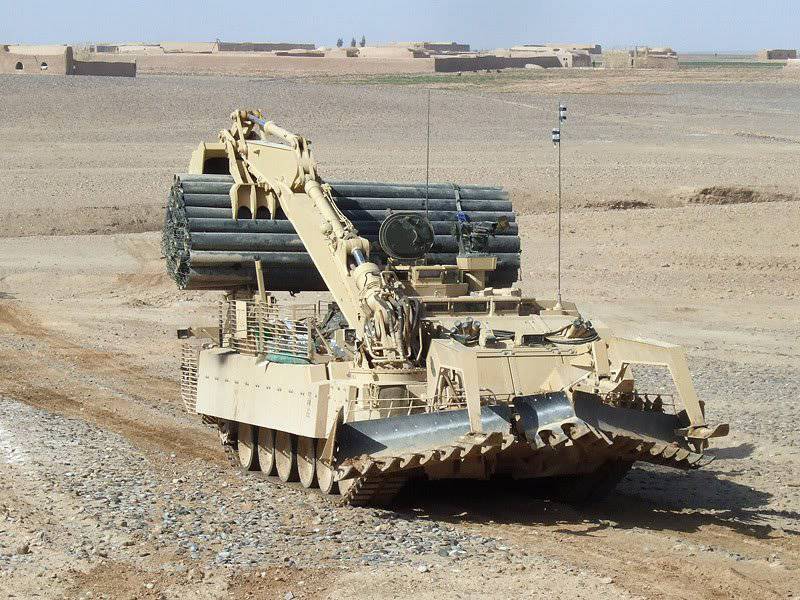
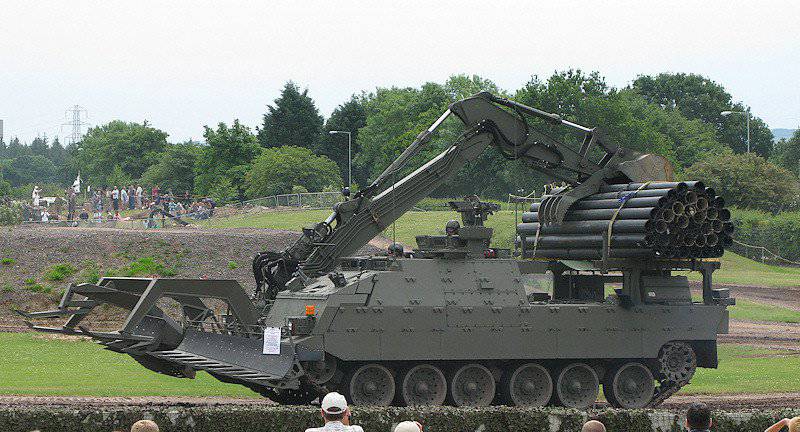
The Trojan pillage of British engineering forces was deployed in Afghanistan. FWMP plow from Pearson Engineering and a set of fashin in the stern are installed on the machine
USA
The combat engineering vehicle M728 (Combat Engineer Vehicle) served a long service in the American army; it was supposed to be replaced by an improved model of Grizzly, but 11 years ago these plans were canceled.
Instead, the army joined the ABV Marine Corps Program and in May 2009, the Anniston plant passed the first two vehicles to the test. In this situation, a certain element of symmetry appeared due to the fact that the ABV of the marines is based on the army M1A1 MBT.
As might be expected, ABV has mounting points in the front of the hull for installing various equipment manufactured by Pearson Engineering, and in the stern of the vehicle there are two launchers of demining charges and a marking system with flags. It was supposed to equip ABV with a remote control system, but serial machines did not equip such a system.
The first ABV production vehicles were delivered to the Marine Corps in the middle of the 2008 of the year; today, the Anniston Army Depot plant supplied the 45 units with a total number of 52 vehicles. Of these, 11 was equipped with a Cobham microclimate cooling system. It represents the vests, worn under the body armor of the crew; The system has proven itself so successfully that, as expected, Anniston Army Depot will produce such systems for the entire fleet.
ABV vehicles are deployed in Afghanistan as part of the marines, the usual ratio is five vehicles per engineering battalion. With adequate funding, the initial needs of the US Army will be 187 machines.
Upgraded EBG Nexter Systems French Army with Rafael Carpet installed in the stern reactive clearance system
France
Instead of withdrawing its MBT from service, France is going against the tendency to use new cars due to the fact that it still has specialized AMX-30 variants, including the CEV EBG (Engin Blinde du Genie armored engineering vehicle). EBG machines do not have enough mobility to work with the Leclerc tank, which replaced the AMX-30. Even after going through the latest modernization and receiving a reservation kit with dynamic protection, the EBG machine does not have a comparable level of protection.
The first EBG machines were delivered in 1993, but since then Nexter Systems has upgraded 54 machines, including 12 for remote mine clearance (designation AMX-30 B2 DT). Some vehicles were also equipped with the Rafael Carpet reactive clearance system and were designated EBG VAL.
The EBG will eventually have to be replaced by a new MAC (Module d'Appui au Contact), which will have the same features as the Terrier machine from BAE Systems. At the moment, the fate of the MAC is not known.
Meanwhile, the only version of the Leclerc MBT that came into service is the ARV, 20 of which were delivered to France and 46 to the United Arab Emirates. A further development of Leclerc ARV was the AEV variant, which was developed and tested, but was not adopted for service.
The Leclerc AEV can be equipped with the K2D demining kit, which includes the Pearson Engineering FWMP trawl mounted in front and two containers with reactive demining systems.
United Kingdom
Finally, in order to verify performance, the long-awaited British CEV modernization program begins. Three modernized Trojan ripping machines with reinforced armor entered service with the 28 Engineer Regiment in Afghanistan at the beginning of the 2010 year. According to representatives of the engineering troops, an armored engineering tractor Terrier Armored Engineer Tractor (AET) is replacing the honorable engineering tractor, which has now been decommissioned.
For its part, Trojan replaced the Chieftain engineering machine; 33 new serial machines and two prototypes transferred to the troops at the end of 2009 year.
This machine uses the driving and propulsion components from the Challenger 2 MBT, the machine has a high level of protection allowing it to work at the forefront. The front-end equipment developed by Pearson Engineering includes a FWMP, TWMP, dozer blade and a new 100-aisle passage marking system installed in the stern.
Unlike the ABV Marine Corps vehicle, Trojan does not have its own demining system, but it can tow a trailer with a Python system from BAE Systems Global Combat Systems. A typical Trojan destructor operation is as follows: it stops outside the minefield, and the Python system shoots charges over this minefield, the linear charge drops to the ground, then detonates remotely, creating an overpressure that initiates the detonation of any mines.
The Trojan raider level then deploys its FWMP or TWMP system and enters the minefield to clear all remaining anti-tank mines. As you move forward, marking rods will be installed to mark the path for cars following you.
The machine is also equipped with a hydraulic excavator boom installed in front of the right, on which you can install various hinges, for example a bucket or an earth drill / hammer. The arrow can be used to quickly unload fascines.
Standard equipment includes air-conditioning systems and protection against weapons of mass destruction to participate in operations anywhere in the world, plus a combat module for self-defense with the possibility of remote control (which is not standard).
The Trojan machine and its bridge building option went through the final stage of acceptance at the BAE Systems Global Combat Systems plant in Newcastle upon Tyne and then were sent to the Bovington defense supply group for final restoration and supply to the engineering units.
The latest specialized engineering machine is Terrier, which was developed by BAE Systems for the engineering troops of the British army. Its production began in January 2010, and the first systems entered service in June 2013. With a mass of 30 tons of terrier can be transported by aircraft C-17 and A400M.
The crew of two people protected from mines double hull. Basic protection against small fire weapons and shell splinters can be improved by additional reservations. Terrier is unique in that it can be controlled remotely from a distance of one kilometer. A BAE representative said that “Terrier embodies the experience gained by British engineering troops for. This is the most advanced engineering system in the British army. Adoption of the Terrier is on schedule and all 60 machines must be delivered in the 2014 year. ” Terrier may be the main candidate to replace the universal engineering tractor of the American army and the marine corps.
Production is currently under way in the city of Newcastle-upon-Tyne; after the entry into service of all Terrier AET vehicles, the capabilities of the royal engineering troops will significantly increase.
Standard equipment includes a front all-purpose bulldozer / bucket that can be replaced with a fork, ripper or demining device from Pearson Engineering.
A retractable boom is installed on the right side of the hull, which can be equipped with a hydraulic bucket, an earth auger or a lifting hook.
A Terrier machine can tow a trailer with engineering equipment or a reactive mine control system Python.
For deployment anywhere in the world, the Terrier AET machine is equipped with a system that includes air conditioning and protection against weapons of mass destruction, as well as a full set of night vision equipment. Armament includes 7,62-mm machine gun and smoke grenade launchers. Also, the machine is ready for the installation of a remote control system (which is not standard).
Materials used:
www.monch.com
www.baesystems.com
www.ffg-flensburg.de
www.patria.fi
www.rafael.co.il
www.fnss.com.tr
en.wikipedia.org
en.wikipedia.org
www.vitalykuzmin.net
www.military-today.com
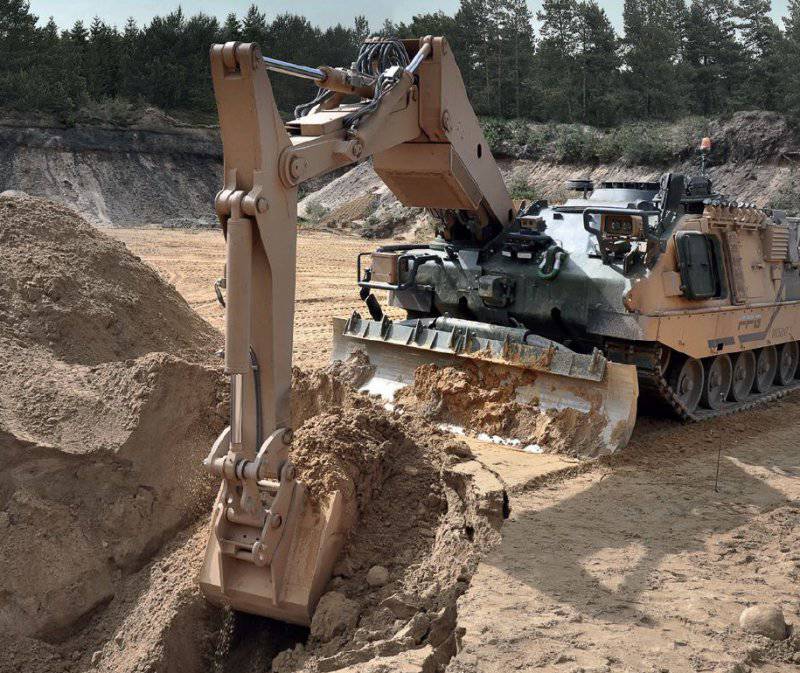
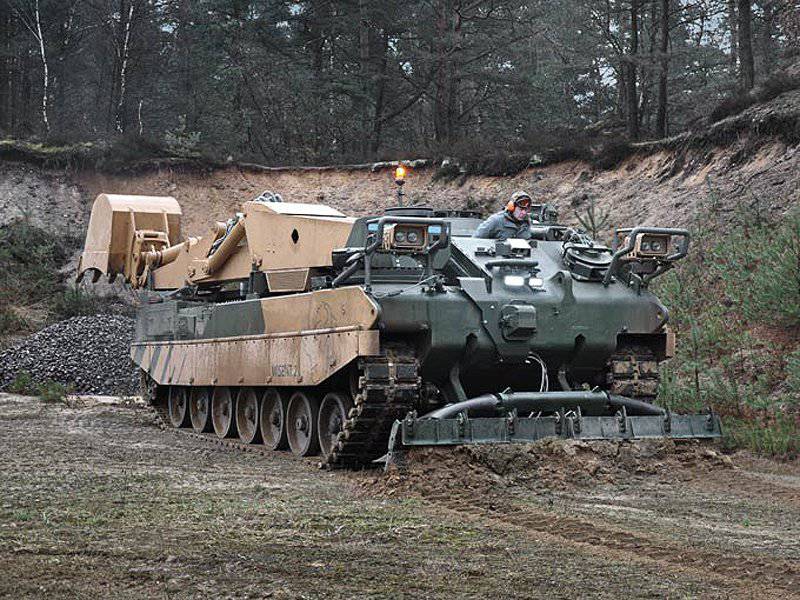
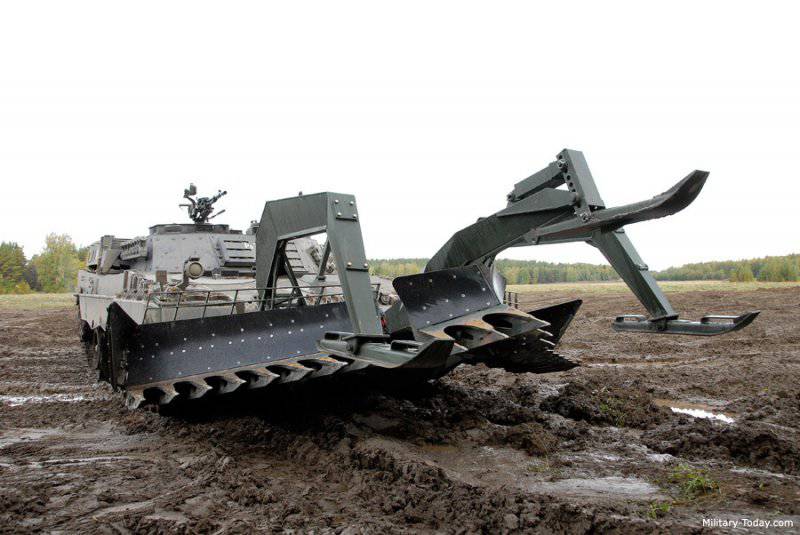

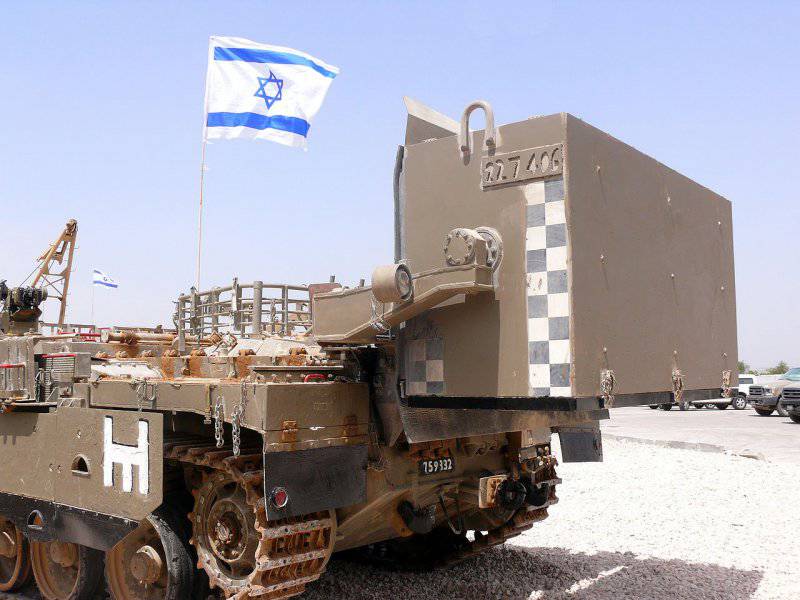
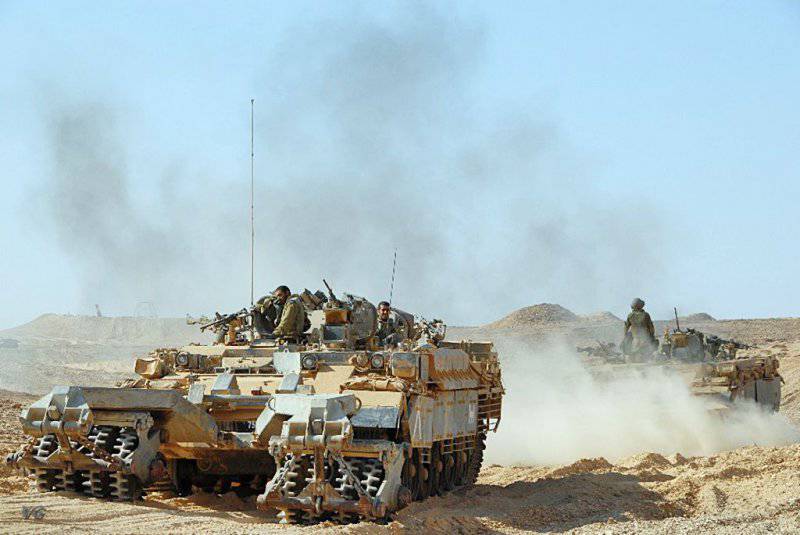
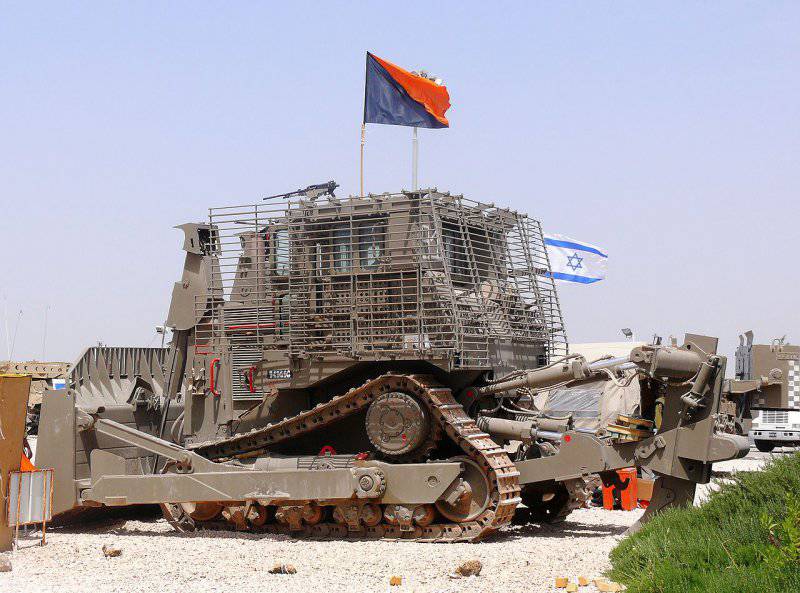
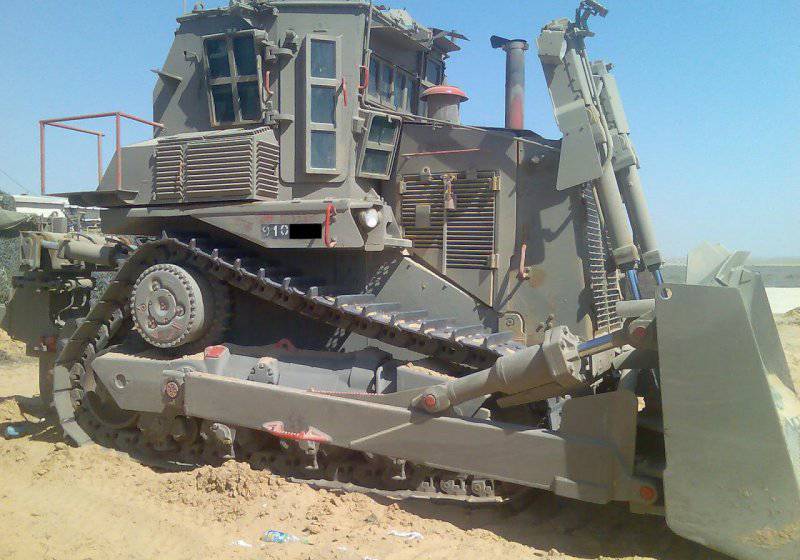
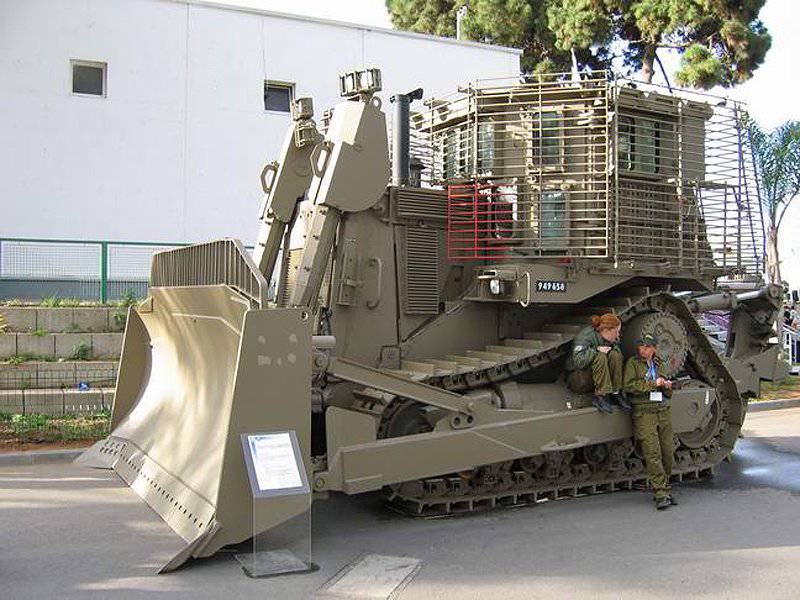
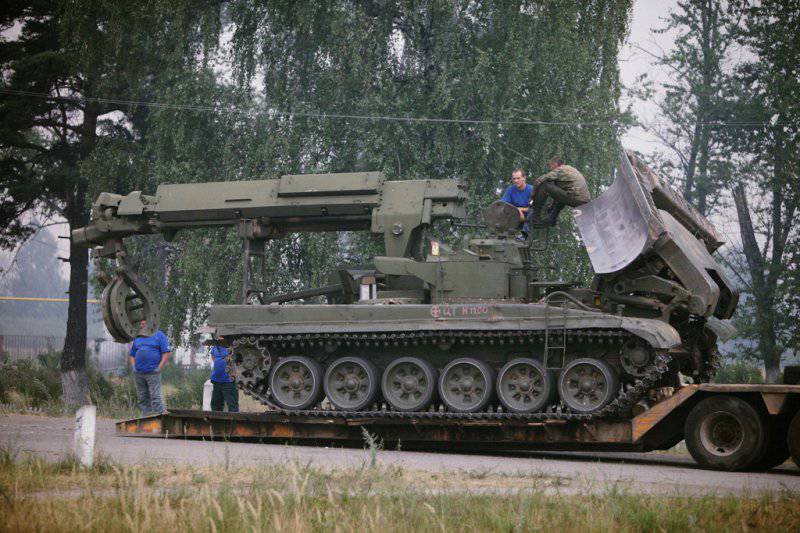
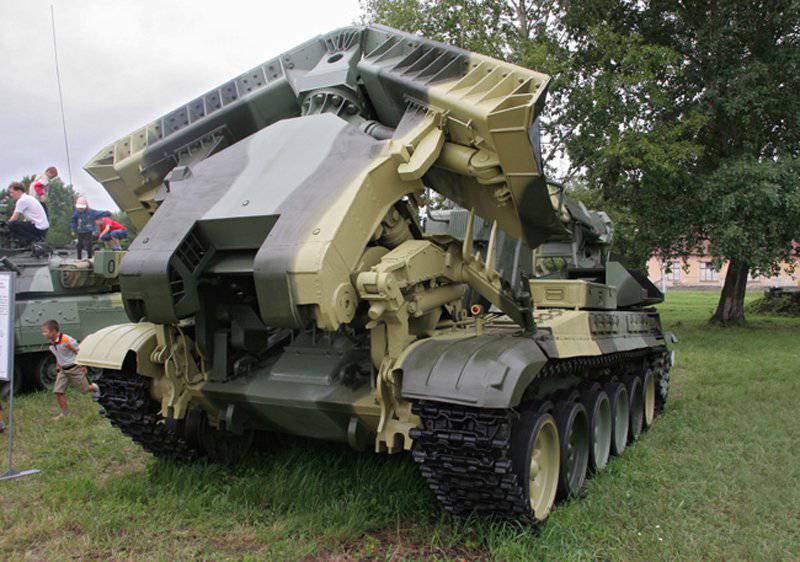
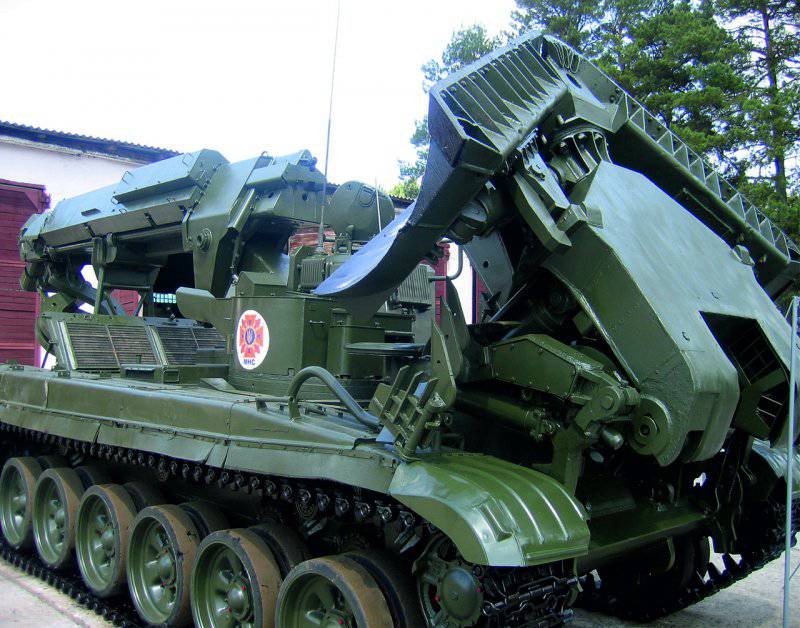
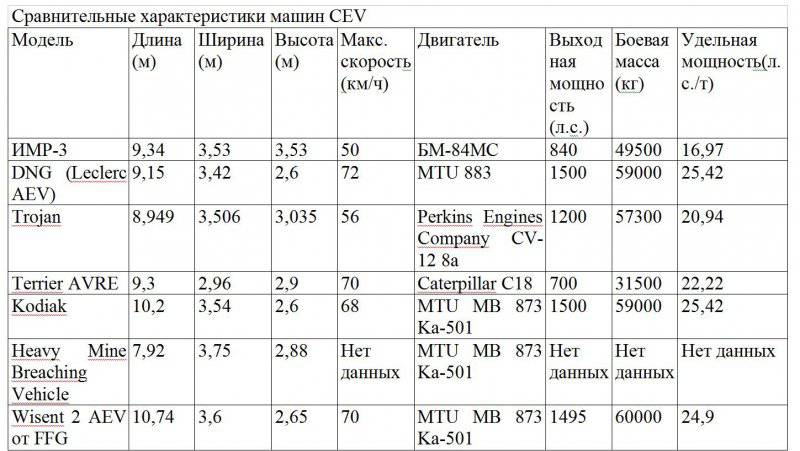
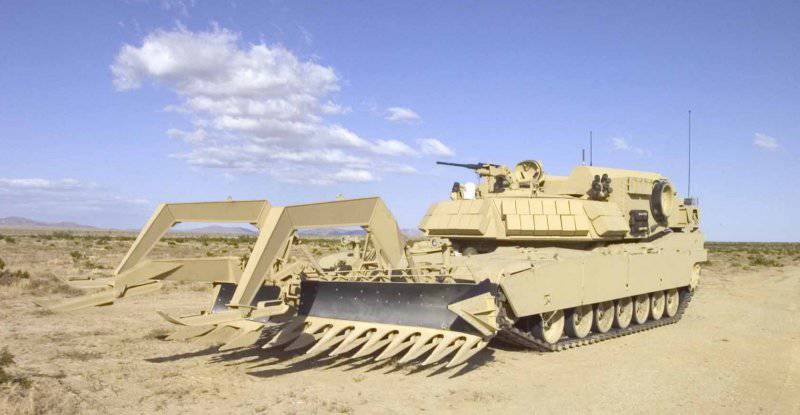
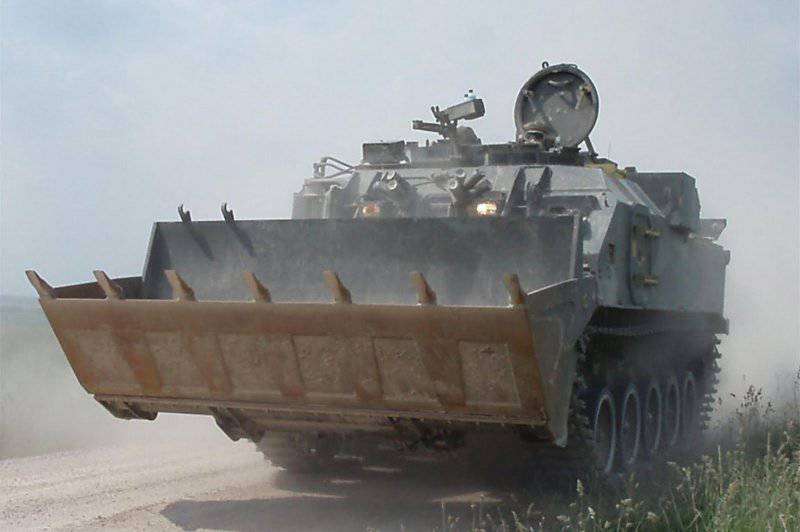
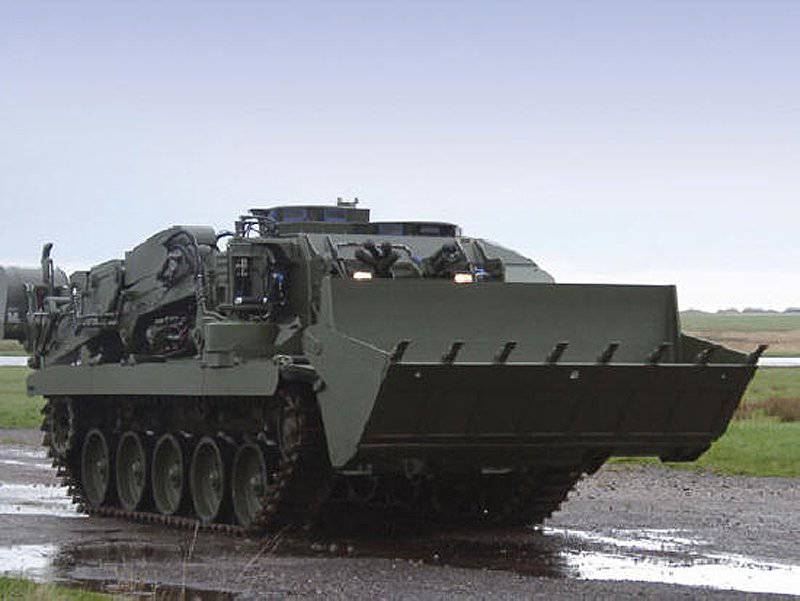
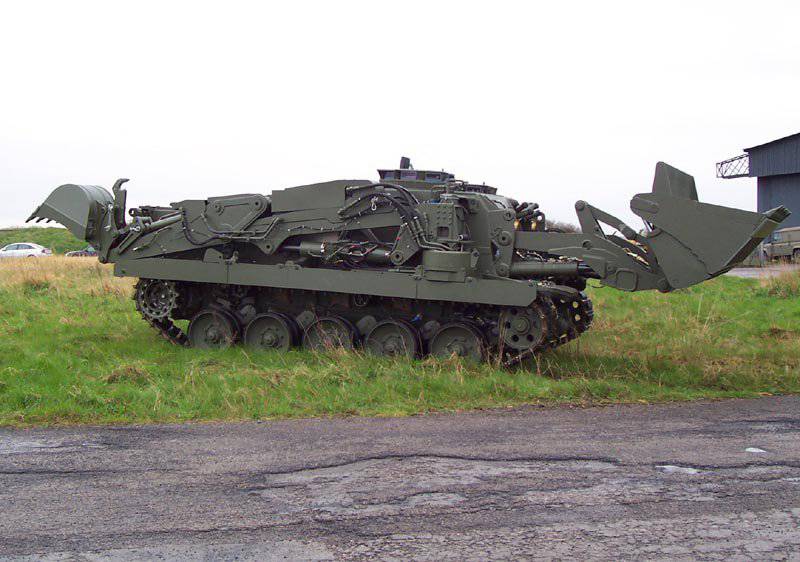
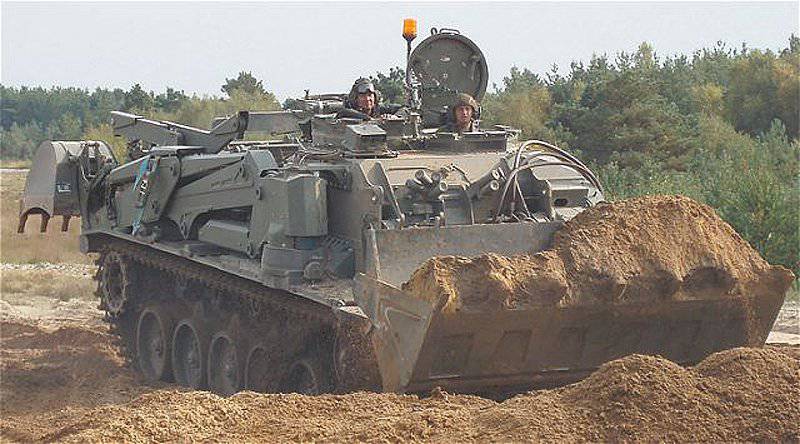
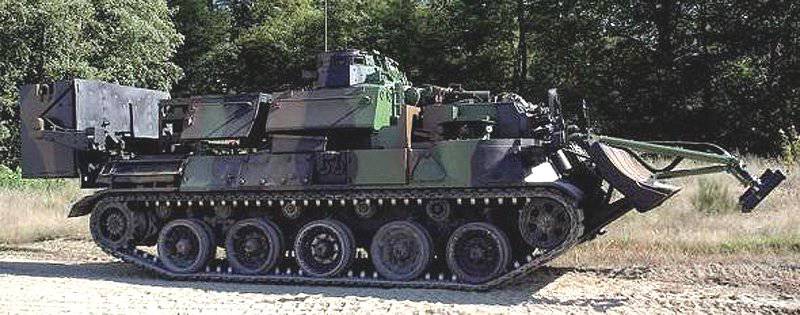
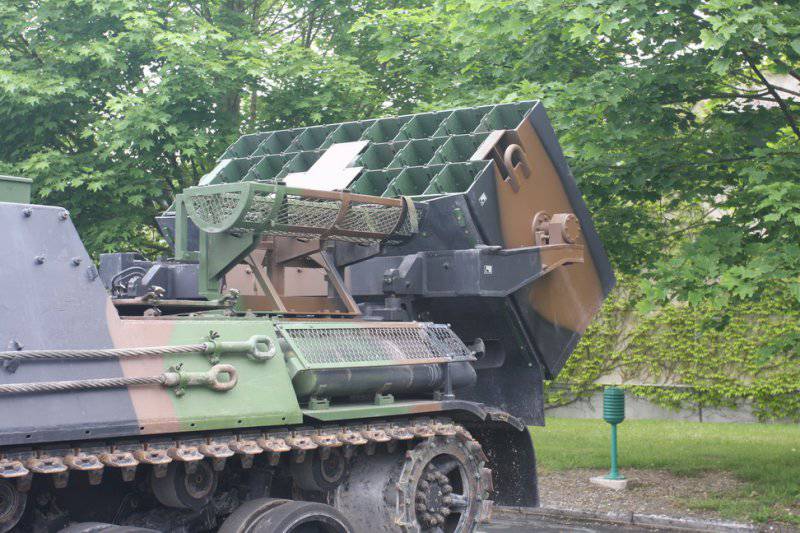
Information